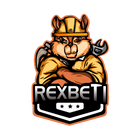What's the difference between files, rasps, and rifflers?
All of these tools give you great control when removing small amounts of material, but each is so different from the others that it makes sense to have all three types in your shop (as well as different versions of each type). Here's what you need to know:

■ Files have long teeth running across their width. Those with only parallel teeth are known as straight-cut or single-cut files. Those with rows running at opposing angles are called cross-cut or double-cut files—these cut more aggressively than straight-cut files. Largely used for metal removal, files occasionally come in handy for fine wood removal, though they quickly clog in that application. You'll find an array of profiles and sizes designed for specific tasks, such as deburring metal edges or sharpening steel teeth on handsaws or chainsaws. Four grades—smooth, second cut, bastard, and coarse—give you additional choices in cutting aggressiveness.
■ Rasps get greater use in wood shops than files and rifflers. Why? Their teeth, shaped like tiny mountain peaks, cut wood aggressively, but with little tear-out or clogging. Available in various coarseness grades, rasps perform superbly in controlled-cutting tasks, such as shaping cabriole legs or gunstocks, carving, easing edges, and tuning joinery. Better rasps have randomly spaced teeth, that help give you smoother surfaces and better cutting control.
■ Rifflers, also known as riffler rasps because they have teeth like those on rasps, have variously shaped cutting surfaces at each end. You hold them in the middle when finely shaping hard-to-reach and concave surfaces. The greater the variety of rifflers you have on hand, the better the odds you'll have just the right shape to meet the task at hand.

Tips for using files, rasps, and rifflers
■ Store them so they don't contact each other and become damaged.
■ Drill the tang hole diameter when making your own to match the width of the tang at its midpoint. This increases comfort in holding the tool and controlling it.
■ Hold the tool with both hands for best control. Push with one hand and guide the cutting surface with a finger or two of the other hand.
■ Cut on the push stroke; a pull stroke will prematurely dull the teeth. Get into the habit of lifting the tool at the end of each stroke and returning to the start position.
■ Clean rasps with a bristle brush, not a file card designed for files, for the longest tool life.



Leave a comment